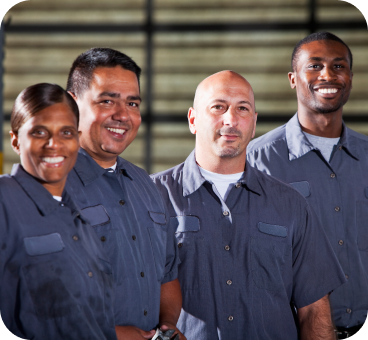
A Tale of Two Teams: Why Culture Is The Backbone of Restoration Companies



Picture this: Two restoration companies both facing the same challenge: a storm has wreaked havoc in their community, and urgent calls are pouring in for emergency repairs. Each company has the tools, talent, and experience to tackle the workload. However, only one emerges from the wreckage with its team intact, morale high, and clients raving.
What sets them apart?
[Hint: The answer is detailed in chapter 5 of our new book, Building Leaders, where industry pros like Andy Amrhein, Marcie Richardson, and Steve Willis describe what makes a great culture]
Team A: Cracks in the Foundation
Team A starts the day with a chaotic morning meeting. Roles aren’t clearly defined, and team members aren’t sure who’s leading which project. Some workers take initiative, while others sit back, unsure of what’s expected. Stress levels rise, communication breaks down, and tempers flare.
By midday, the cracks are obvious. Team members are frustrated, burnt out, and quick to blame one another for mistakes. Leaders step in, but their feedback feels reactive—more like finger-pointing than guidance. Morale takes a nosedive, and by the end of the day, even the victories, if any, feel hollow.
What went wrong? As the Navy Seals say, “Under pressure, you don’t rise to the occasion; you sink to the level of your training.”
Team A lacked a unifying routine, strong organizational habits, and company culture needed to navigate high-pressure situations.
Team B: A Culture That Holds Strong
Meanwhile, over at Team B, things look very different. The day kicks off, as it always does, with a quick, focused meeting. Leaders clearly communicate the day’s goals, reinforce the company values, and assign roles based on each person’s strengths. Everyone knows their responsibilities and how their work contributes to the bigger picture.
Throughout the day, feedback flows naturally—through multiple channels and in different ways—and the team is empowered to ask questions, challenge ideas, and propose solutions. Mistakes are addressed constructively, and wins—no matter how small—are celebrated. Team members check in with one another, offering help when needed.
By the end of the day, Team B has not only handled the workload but strengthened their bond as a team.
What went right? As Chapter 5 of Building Leaders puts it, “Culture is a living, breathing thing, and you have to nurture it every day.”
What Team B Got Right
The difference between these two teams isn’t talent or resources—it’s culture. Leaders like Marcie, Andy, and Steve understand that culture isn’t just about what you do in good times; it’s how you show up when things get tough.
Here’s what made Team B stand out:
- Intentional habits: By cultivating the “daily discipline of cultural care,” they built a morning meeting routine that reinforces their desired culture, which then helps them navigate sticky situations.
- Nurture what you want to see: By promoting positive reinforcement, leaders help individuals grow and strengthen the culture as a whole, creating a fertile environment for leadership development.
- An environment of feedback: Team B created an environment where team members are empowered to speak up, challenge ideas, and contribute solutions, which makes everyone feel valued and heard.
- Autonomy & Trust: Each team member understands their role and how it ties to the big picture and can execute without micromanagement.
Which Team Are You Building?
Every restoration leader faces the same choice: Will your team crumble under pressure, or will it rise to the occasion? Without the right leaders steering your company, the story might not have a happy ending.
Thankfully, Marcie, Andy, and Steve's wisdom and lived experiences in Building Leaders offer a guide for building a culture that can withstand any storm or fire.
Remember: The next generation of leaders is already sprouting, and it’s up to you and the culture you create to cultivate them.
Ready to take the next step? Dive into the book and discover how to transform your team into a powerhouse of trust, collaboration, and resilience—all to build tomorrow’s leaders.









